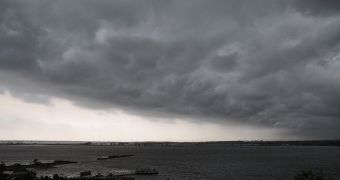In a finding that again demonstrates the global nature of pollution, researchers discovered that the massive amount of pollution being emitted from developing Asian nations, especially India, was being carried up into the atmosphere. During the monsoon season, vast amounts of harmful chemicals and pollutants are being lifted to high altitudes, from where prevailing winds spread them around the globe, contaminating other areas as well. The new work was conducted by experts at the Boulder, Colorado-based National Center for Atmospheric Research (NCAR), which is sponsored by the US National Science Foundation (NSF).
The investigation, which was additionally sponsored by the Canadian Space Agency (CSA) and NASA, is detailed in a paper published yesterday, in the March 25 issue of the respected scientific journal Science Express. “These results present intriguing insights into the interactions of monsoons and chemical emissions generated in the heavily industrialized region of south Asia. Aided by monsoon circulation, pollutants such as hydrogen cyanide are lifted aloft from the troposphere all the way to the lower stratosphere. At such high levels they can circulate around the globe with a residence time of several years,” the Program Director for the NSF Division of Atmospheric and Geospace Sciences, Anjuli Bamzai, explains.
“The monsoon is one of the most powerful atmospheric circulation systems on the planet and it happens to form right over a heavily polluted region. As a result, the monsoon provides a pathway for transporting pollutants up to the stratosphere,” the lead author of the new investigation, NCAR expert William Randel, adds. He says that, among the most dangerous chemicals found in the upper atmosphere, black carbon, sulfur dioxide, and nitrogen oxides were retrieved from altitudes as high as 20 to 25 miles above the surface of the planet. He adds that the strong winds the monsoon triggers are capable of dispersing the chemicals in such a manner.
The pollutants undergo a series of changes while in the air. They can remain in the upper layers of the atmosphere for up to several years at a time. A portion of them will eventually make its way back in the layers of air closer to the Earth, whereas others will simply be broken apart into their constituent chemicals. But the investigation also sets off the alarm on the state the upper atmosphere will find itself in within just a few years. As Asian nations continue developing their industries and economies at a frantic rate, they will emit larger and larger amounts of pollutants, which will further disrupt the already-fragile chemical balance the air has.

 14 DAY TRIAL //
14 DAY TRIAL //